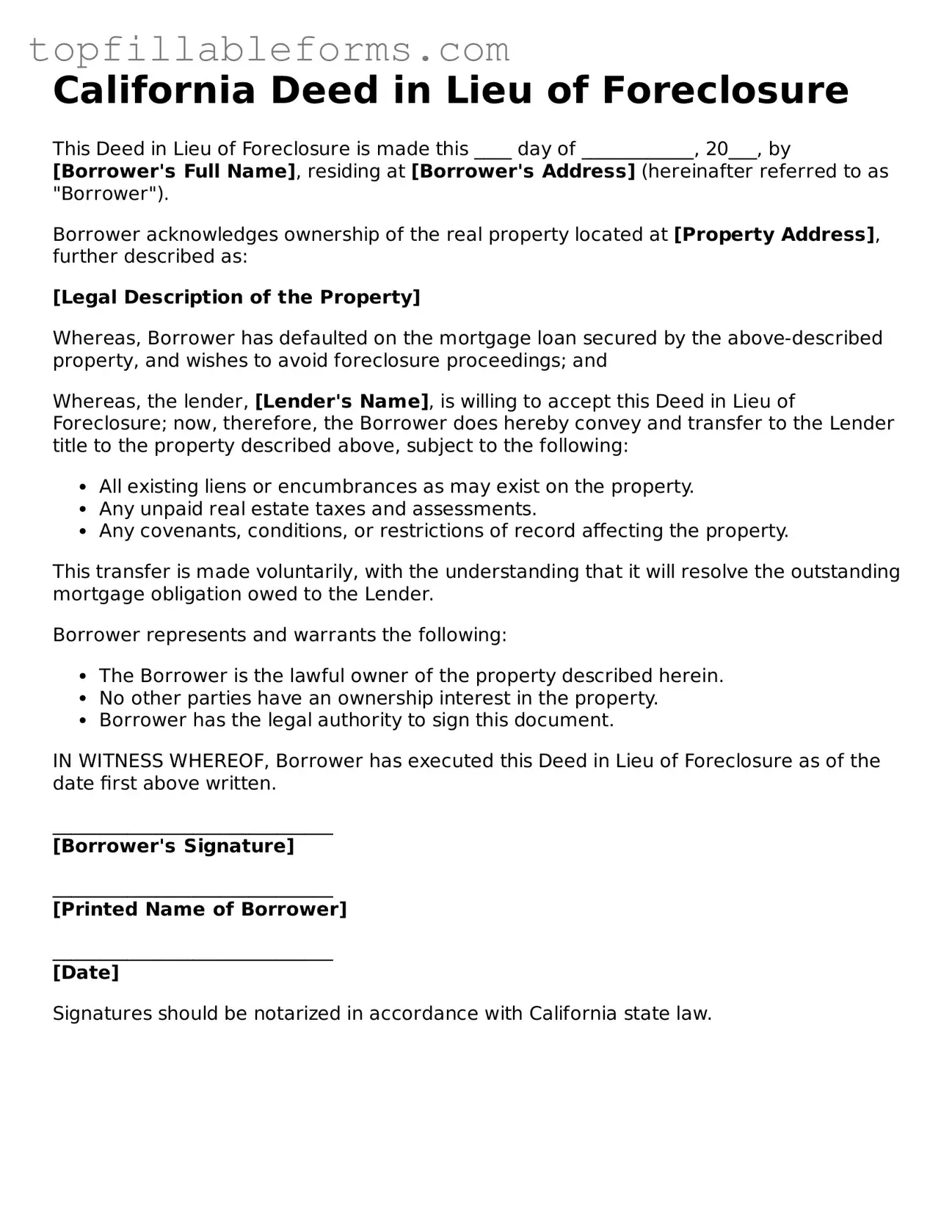California Deed in Lieu of Foreclosure
This Deed in Lieu of Foreclosure is made this ____ day of ____________, 20___, by [Borrower's Full Name], residing at [Borrower's Address] (hereinafter referred to as "Borrower").
Borrower acknowledges ownership of the real property located at [Property Address], further described as:
[Legal Description of the Property]
Whereas, Borrower has defaulted on the mortgage loan secured by the above-described property, and wishes to avoid foreclosure proceedings; and
Whereas, the lender, [Lender's Name], is willing to accept this Deed in Lieu of Foreclosure; now, therefore, the Borrower does hereby convey and transfer to the Lender title to the property described above, subject to the following:
- All existing liens or encumbrances as may exist on the property.
- Any unpaid real estate taxes and assessments.
- Any covenants, conditions, or restrictions of record affecting the property.
This transfer is made voluntarily, with the understanding that it will resolve the outstanding mortgage obligation owed to the Lender.
Borrower represents and warrants the following:
- The Borrower is the lawful owner of the property described herein.
- No other parties have an ownership interest in the property.
- Borrower has the legal authority to sign this document.
IN WITNESS WHEREOF, Borrower has executed this Deed in Lieu of Foreclosure as of the date first above written.
______________________________
[Borrower's Signature]
______________________________
[Printed Name of Borrower]
______________________________
[Date]
Signatures should be notarized in accordance with California state law.
